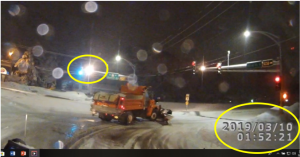Time-sensitive snow plowing operations can be hampered when snowplows must stop and wait for red traffic signals. But Minnesota law prohibits the use of high-priority vehicle preemption equipment by other vehicles.

The City of St. Cloud received a $10,000 grant through the Local OPERA Program to evaluate a new level of traffic-signal preemption developed for snowplows and other similar equipment called relative priority preemption (RPP). Relative priority preemption is similar to high-level preemption in that it will force a traffic signal to display green except when emergency vehicles need it.
To test the system, four snowplows at the St. Cloud central maintenance facility were equipped with combination GPS and video cameras to capture both video and location details of the snowplows on their routes. Before the study began, the city navigated an extensive state permission process for a traffic signal override device to be used with the snowplows.
The city collected five years of data and completed its analysis of the data in early 2020 with the help of the St. Cloud State University Statistics Department. The project team determined that travel times for snowplows improved by 22 percent using relative priority preemption technology.
This study is significant because it shows the effectiveness of a local road agency using RPP technology for snowplows. In addition, the system provides many more safety and operational benefits that are difficult to quantify, such as reducing the number of unplowed snow windrows blocking cross traffic at intersections and more quickly clearing the way for emergency vehicles during snowstorms.
For additional information, check out these resources: